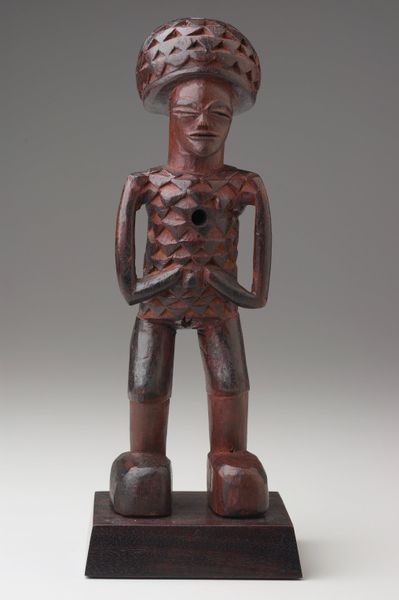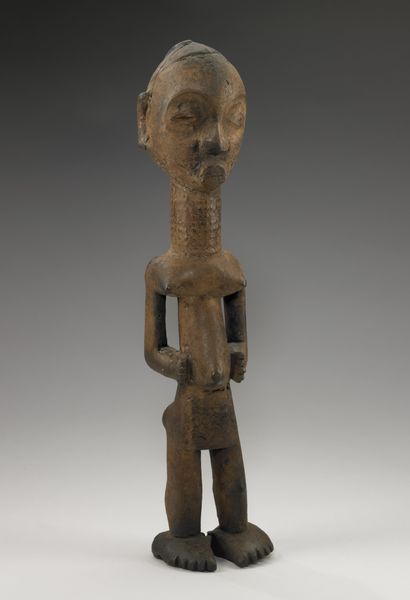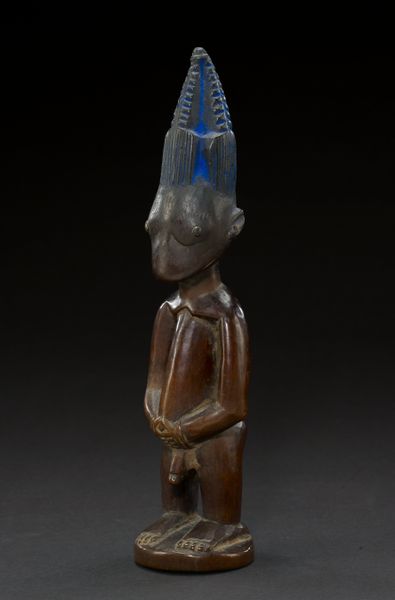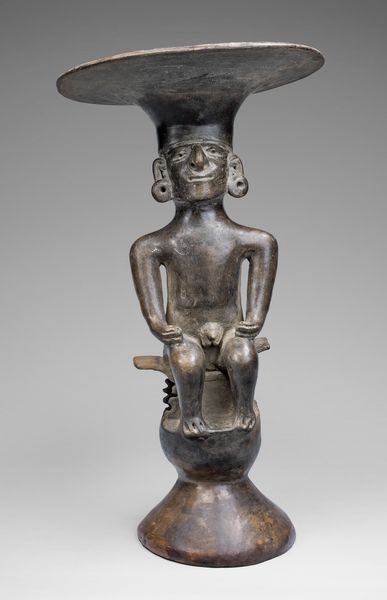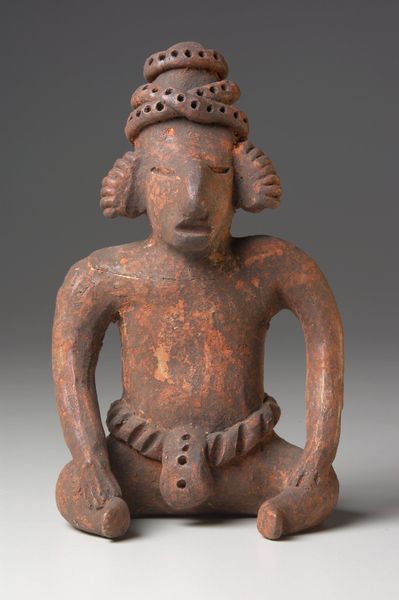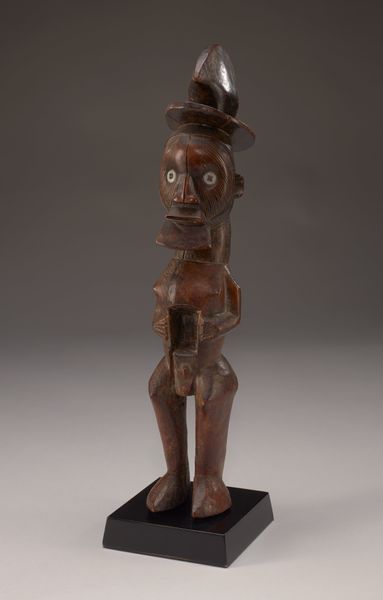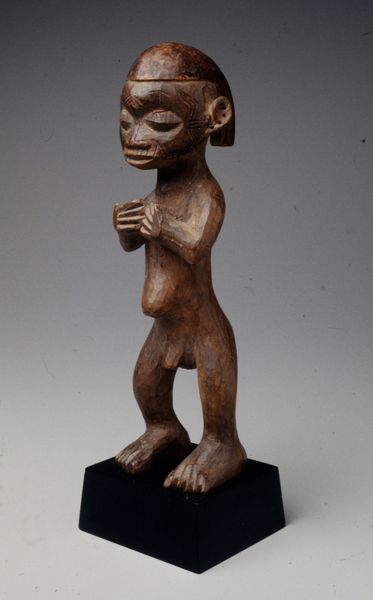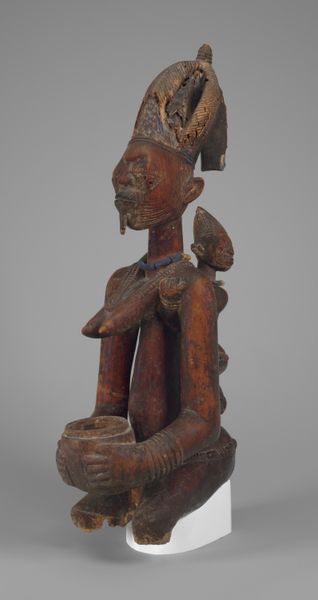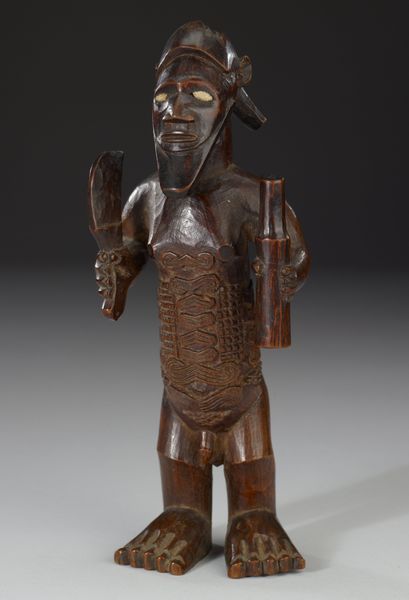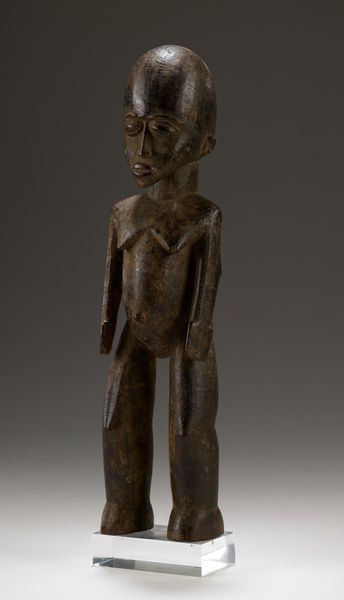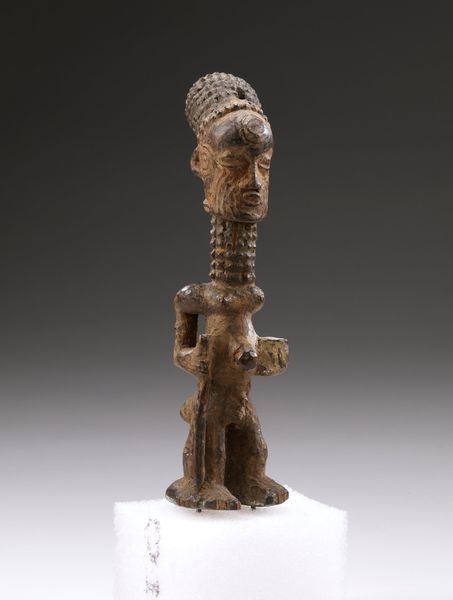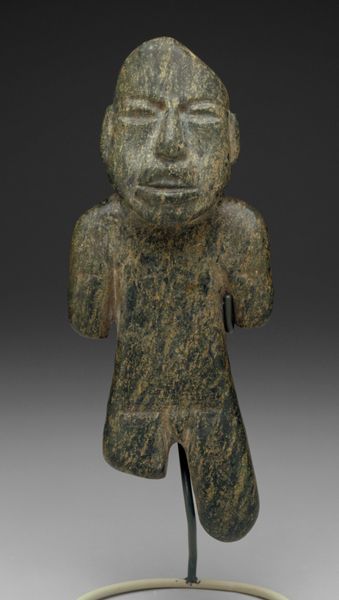
sculpture, wood
#
portrait
#
african-art
#
sculpture
#
figuration
#
sculpture
#
wood
#
yoruba-art
Dimensions: 11 1/2 × 3 1/16 × 3 9/16 in. (29.21 × 7.78 × 9.05 cm) (with base)
Copyright: Public Domain
Curator: This wooden "Standing female figure" from the late 19th century, attributed to the Songo people, immediately makes me think about the labor involved in its creation. Editor: I agree. The wood itself seems quite heavy, and the figure's proportions are stocky and solid, giving a real sense of weight. What specifically stands out to you about the "means of production", as it were? Curator: I'm interested in the tools and techniques employed. Consider the relative roughness of the carving, versus, say, the polish you'd see on ivory. What kind of societal role shaped that divergence in artisanal traditions? What about the social position of the artist? Were they a specialist? Editor: So, by looking at the materiality and the level of finish, you're inferring social structures and perhaps the artwork's intended purpose. I see how that moves beyond a simple aesthetic appreciation. It makes me wonder, was it mass produced for commerce, or unique piece of artistic work for elite consumption. Curator: Precisely. It invites us to speculate about the conditions of production and how those conditions shaped the object itself. How does the figure’s stylized representation—the geometric features and exaggerated hands—reflect a local aesthetic tied to specific rituals or social roles within the Songo community? What were its modes of exchange? Was the artist compensated fairly for their labor? Editor: That’s really insightful. I initially looked at it as just an anonymous object. Now I’m seeing layers of context relating to how it was made and circulated. It also appears to be both gendered and nude: how is gender being displayed here in terms of available materials or tools? Curator: Absolutely. This is exactly the value in closely examining the production of material objects and what the object symbolizes or implies about historical socioeconomic structures. Editor: I'm glad we talked about the social conditions that produced this object. Thanks.
Comments
No comments
Be the first to comment and join the conversation on the ultimate creative platform.
